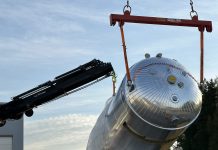Professional metal handling plays a vital role across numerous industries, where this versatile material is employed to manufacture tools, technologies, and infrastructure of all kinds. Metals are fundamental to sectors such as agriculture, electrical, and automotive, making significant daily contributions to the global economy.
Metal fabrication demands specialised skills and expertise, involving the welding and assembly of raw materials to form new structures. Advances in manufacturing techniques have streamlined this process, enhancing both efficiency and cost-effectiveness while supporting sustainability goals.
Explore the latest advancements in metal fabrication, highlighting the innovative technologies and evolving trends that are shaping the industry today.
What is Metal Fabrication?
Metal fabrication involves transforming raw materials into new parts, machinery, and structures through cutting, bending, and welding. This precision work typically requires skilled operators and specialised equipment.
Industries such as automotive heavily depend on metal fabrication to produce components like engines, exhaust systems, and body panels.
Industrial sectors rely on metal fabrication for manufacturing vital components, including conveyor belts and durable manufacturing tools. Additionally, metal fabrication often extends to decorative applications like gates, staircases, bridges, and architectural features.
An overview of the metal fabrication process
Metal fabrication is essential for producing automotive parts that meet stringent safety and durability standards. Although the process can vary by project, several core steps are common across applications.
It begins with meticulous design, often utilising computer software to ensure accuracy and feasibility. Once designs are finalised, raw metal sheets or bars are cut to size using advanced machinery.
Next, the pieces are shaped through rollers, stamping, or pressing—some stages may be fully automated, while others require manual input. Welding then joins components to form the final product.
Finishing touches include polishing, cleaning, and applying protective coatings or paint. Before packaging and shipping, products undergo rigorous quality control testing.
Metal fabrication & emerging technologies
Metal fabrication has evolved dramatically from its early days when manual labour and hand-drawn designs were the norm.
Modern technology has revolutionised every step, making fabrication safer, faster, and more efficient. This progress enables higher production volumes and improved precision.
Key technological advancements include:
- Automation & Robotics: Once reserved for complex tasks, automated machinery and robotics now handle a broad range of fabrication operations. These systems accelerate production, address labour shortages, and reduce costs.
- 3D Printing: Also known as additive manufacturing, 3D printing is increasingly integrated into metal fabrication. Methods like powder bed fusion allow complex designs with minimal waste, depositing material layer by layer under precise computer control.
- Computer-Aided Design (CAD): CAD software, used for decades by leading manufacturers, is now widespread. It enables testing and refinement of components digitally before fabrication and supports programming of CNC machines for precise cutting.
Sustainability in metal manufacturing
Sustainable practices are becoming central to metal fabrication as manufacturers seek to lower environmental impacts.
Recent changes include improved waste management and energy-efficient production methods, contributing to greener operations.
Notable sustainability efforts include:
- Recycling & Reuse: Recycling scrap metal reduces the need for energy-intensive raw material extraction and transportation, lowering carbon footprints.
- Eco-Friendly Finishes: Traditional finishing materials often contain VOCs (volatile organic compounds) that harm air quality. Many facilities are switching to non-toxic, water-based alternatives that are environmentally safer.
- Energy Efficiency: Updating machinery to energy-efficient models and integrating renewable energy sources helps cut costs and support sustainable manufacturing goals.
Innovations in metal alloys
While traditional metals remain fundamental, novel lightweight alloys are gaining prominence, especially in automotive manufacturing, where they enable faster and more fuel-efficient vehicles.
A 2024 study from the Lawrence Berkeley National Laboratory introduced an alloy composed of niobium, tantalum, titanium, and hafnium, demonstrating exceptional durability across extreme temperatures.
This alloy resists cracking due to atomic-level crystal bending, offering potential for high-efficiency engines and future space travel equipment.
Such breakthroughs point toward an exciting future for metal fabrication, driven by smarter, more resilient materials and advanced manufacturing technologies.



